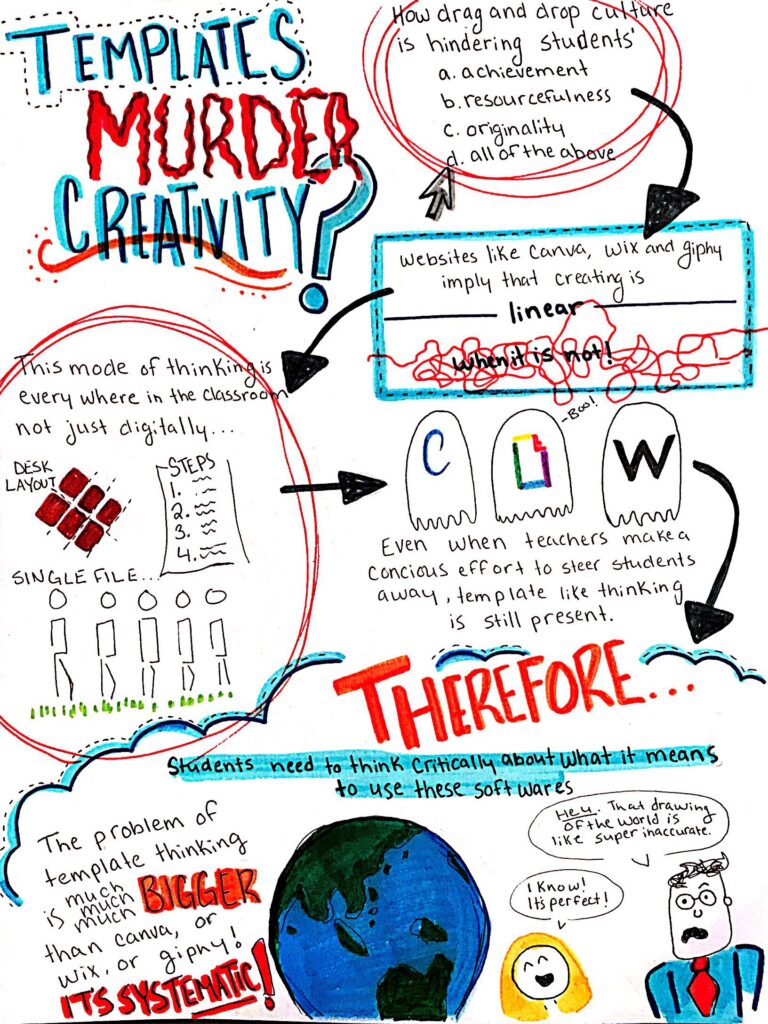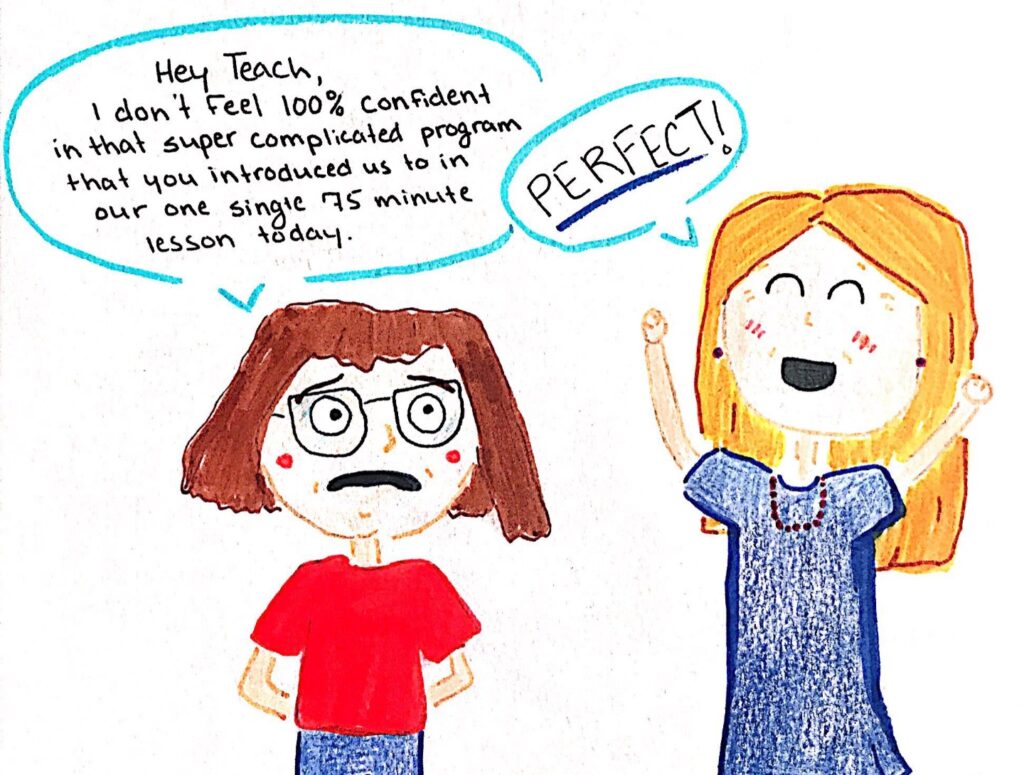I read “Digital Ghosts” in the Modern Classroom written by Ashley Hink.
As an avid user of Canva, I was skeptical prior to reading this piece. I was ready to be critical of her arguments and defend the website. However, Hink was not attacking my precious, free, online, user friendly software Canva; she was speaking to a much larger problem that exists in the school system.

Similar to myself, many students struggle with more advanced web developing software because they never have had to make something from nothing. Furthermore, when we are encouraged to do so, and “fail” we never pick the mechanism back up because we think we are no good at it – which is not entirely false. We are no good at it, but this is because it requires a skill we have never been encouraged to exercise before. We live in a climate where finding easier ways to do difficult tasks is praised.

With how I have chosen to conclude my Sketchnote, it feels necessary to comment on what it means to use the materials that I did to complete it. The use of markers and pencil crayons speaks to a sense of amateurism. This term has a negative connotation; however, I do not mean it as such. I am using the term in a context of accessibility both in the making of the product, and the receiving of the information of the article. “Digital Ghosts” focuses on independent thinking digitally. However, for my given knowledge, skills, and resources, a hand drawn Sketchnote was the best medium to communicate the information.
The ability to achieve something aesthetic without any specific skill or talent is desirable and many artists have based their practise around this concept. However, in order to achieve this success students must understand what it means to be using these mediums and how they are limiting. Once this is achieved they will be able to critically participate and act as solitary beings in digital creation, giving themselves agency in their work.

